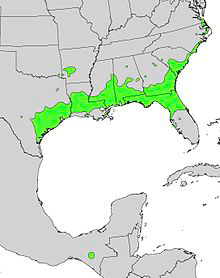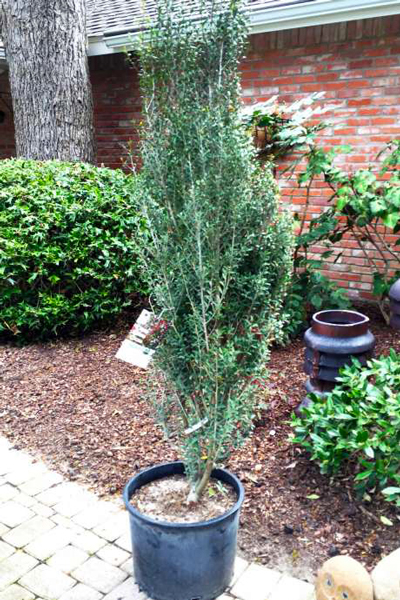My Favorite Native Shrub
I grew up in College Station. We moved there in 1946 from Alpine where my father had taught botany at Sul Ross State Teacher’s College. (I’m going to use the old names for the moment.)
When we came to College Station he co-founded the Range and Forestry Department at The Agricultural and Mechanical College of Texas. He was the range specialist, but I spent many a happy hour combing the woods out by the old Easterwood Airport with him. Just beyond where the Fire Training School was located back then. (May still be, for all I know.)

That’s where I met this beautiful shrub. It was absolutely everywhere. Birds would eat the berries about this time of the year and, shall we say, “plant” the seeds beneath the branches of the big old post oaks. There were dense thickets of yaupons growing over hundreds of square miles of Brazos County.
Jump ahead a few years. I was a freshman in high school. I was working in the A&M nursery alongside a man named Mike Ringhofer. Mike had several dwarf yaupons he had selected for special growth habits, and I enjoyed hearing him talk about how he hoped to introduce them into the market. Mike taught me to watch plants for slight variations that might be of interest to growers, and I’ve carried his enthusiasm for all my career.
I’ve seen a lot of yaupons come into the market in the ensuing years. I’ve grown most of them. In fact, most are still growing in our Collin County landscape as I type this for you. I could write a lot more, but I’m going to cut it all short and get down to the main points.
Pertinent facts about yaupons…
• Scientific name: Ilex vomitoria
• Native range: East Texas east to the Atlantic Ocean. Basically, the southern half of Texas, Louisiana, Mississippi, Alabama, Georgia and South Carolina and the northern half of Florida.

• Plants are either male (pollen-producing) or female (berry-producing).
• Mature size of the native species: 15 to 20 ft. tall and wide, although individual specimens may grow much larger.
• Evergreen, with small, scalloped leaves and no spines.

• Fruit is BB-sized and dark red. Ripen in November and persist until eaten by birds in February.
You may see a golden-fruited variety sold in nurseries from time to time. On first blush you’d think this would be a great addition. But the first year that my plant had fruit I came home one night, having been out of town for a week. My plant was covered with berries that had turned this golden yellow. The plant had 6 inches of new shoot growth that it had produced that year, so the berries were down a bit on the stems. Honestly, as I drove in the drive it looked like my plant had gotten dry and was shedding its leaves.
• Native yaupons are genetically shrubs, but enterprising landscape architects discovered in the late 1950s that they could be trained to grow as small trees. That was about the same time crape myrtles were being trained in the same way.
A few of the options with yaupons…
• Standard yaupons. These can be grown in nurseries, often in large containers so there will be no loss of roots when they are transplanted. Assuming you want a fruiting plant, either buy a named and labeled selection or buy a plant that has fruit already growing on it.

• Weeping yaupon. If you’re looking for distinctly arching branches, this one is just up your alley. It grows to 15 to 20 ft. tall and wide. It is a female plant, so it will bear heavy loads of beautiful berries.
• Will Fleming yaupon. Decidedly vertical, this looked to be an outstanding selection. Only after we had it for a few years did we discover that its branches splay out of plumb. That creates extra work in tying them up, and the trimming we do can ruin its compact shape.

• Scarlet’s Peak. Strongly vertical, this one satisfies the need for a plant that grows to be 8 or 10 feet tall and only a couple of feet wide. It bears fruit.

• First Lady. This is a great yaupon, but it was only on the market for a few years. It’s an intermediate form that has grown to 5 to 6 feet tall and wide in our landscape. It bears handsome fruit, and its leaves are standard yaupon size, so it doesn’t look like a dwarf yaupon that just got too large. Maybe someday someone will reintroduce this into the market.

• Dwarf yaupons. There are many different selections in this clan. They grow to be 2 to 3 feet tall and wide, perhaps just a bit larger with age. They can be used where you might otherwise use Japanese boxwood, although they tend to be slightly more spreading where boxwoods are gently more upright.
Want to learn a bit more…
Here is some great background information on yaupon hollies from North Carolina State University. You might find it interesting.
